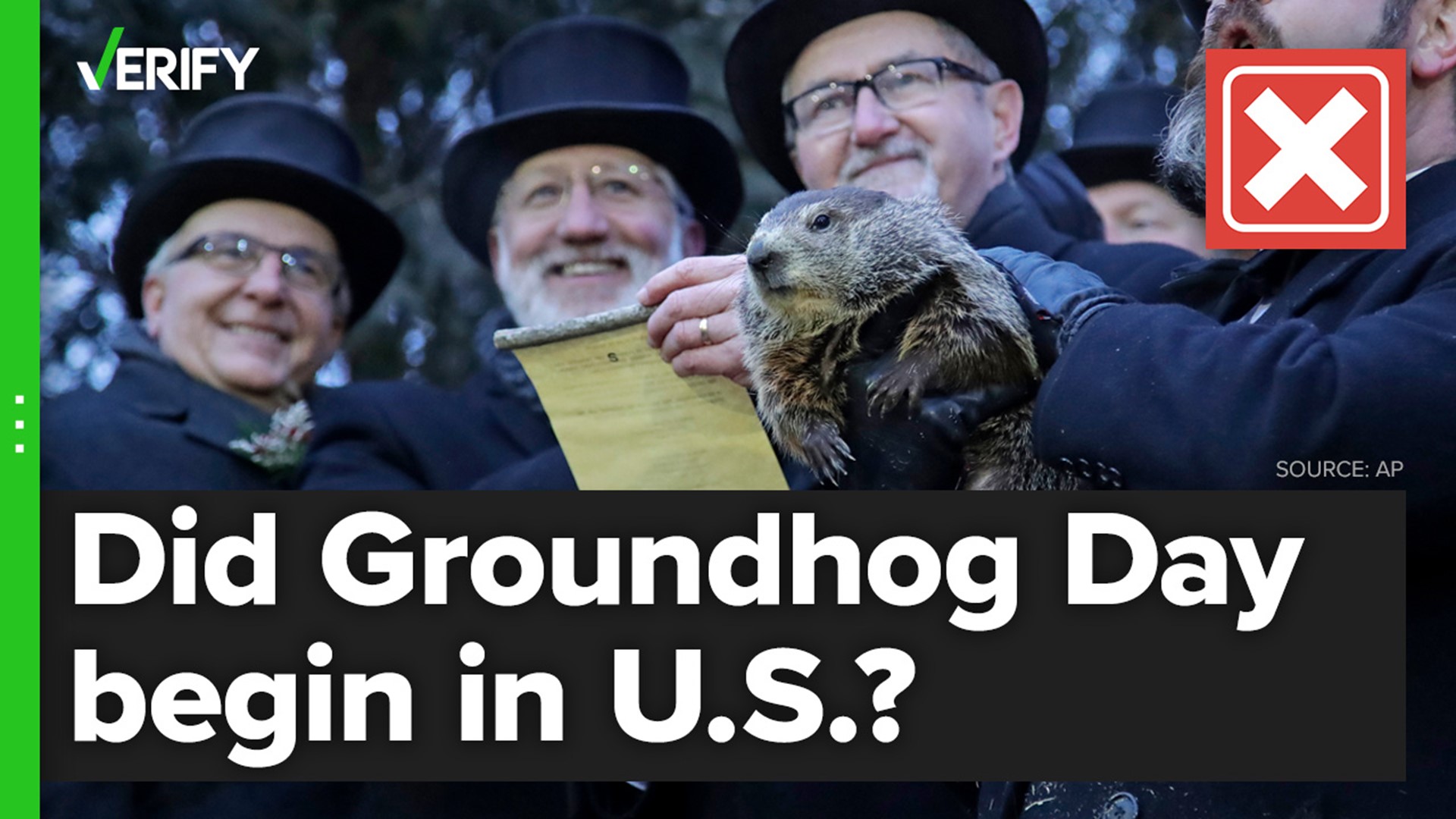PUNXSUTAWNEY, Pa. — Every year since 1887, the eyes of the world turn to the small western Pennsylvania town of Punxsutawney to learn what its most famous rodent has to say about the length of winter.
Yes, it's almost Groundhog Day, the annual holiday where the nation turns to Punxsutawney Phil to provide a glimmer of hope that winter will soon be over.
When he's roused from his slumber inside a tree stump on Gobbler's Knob, as local legend has it, Phil predicts there will be six more weeks of winter if he sees his shadow. If there's no shadow to be seen, it means an early spring is one the way.
The Punxsutawney Groundhog Club, which has been caring for the prognosticating rodent for the last 137 years, says Phil's accuracy rate stands at an unblemished 100 percent.
But what do the scientists say?
How accurate are Punxsutawney Phil's predictions?
According to the Punxsutawney Groundhog Club's own records, Phil has made 127 predictions since 1886, when Groundhog Day was first established as a holiday (the Punxsutawney Groundhog Club was formed a year later).
Of those 137 weather calls, Phil has seen his shadow 107 times, predicting six more weeks of winter. There have been only 20 occasions where Phil did not see his shadow and called for an early spring (There are 10 years, early in Phil's tenure, where no record of a prediction was kept.)
The Stormfax Almanac puts Phil's lifetime accuracy rate at 39 percent. He's been slightly more accurate over the last 10 years or so, according to the National Oceanic and Atmospheric Administration, which says he's been right 40 percent of the time since 2012 after comparing Phil's predictions to the U.S. national temperature average over that span.
Since the year 2000, Phil has predicted an early spring six times, the most-recent coming in 2020 (when the world, mired in the COVID-19 pandemic, certainly needed to hear some good news).
But Phil has seen his shadow in each of the last three years. We'll have to wait until February 2 to see if he breaks that trend.

